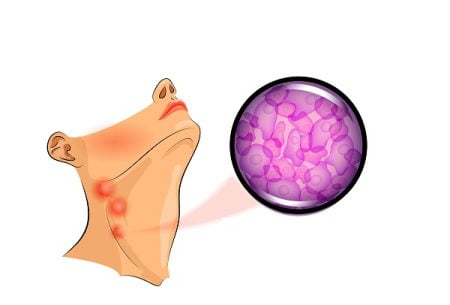Complications of Untreated Lymphoma
- Updated on: Aug 13, 2024
- 2 min Read
- Published on Nov 2, 2019

Diagnosing Lymphoma
People worry when diagnosed with lymphoma because even if it is curable, there is a high risk that it can come back. The cure-rate of lymphoma is high in most cases but the treatment has some side effects that can be long-lasting and severe.
Lymphoma is divided into two types: Hodgkin’s Lymphoma and Non-Hodgkin’s lymphoma (NHL). They both originate in a type of white blood cells known as lymphocytes but Hodgkin’s lymphoma involves Reed-Sternberg cells, which is not the case in non-Hodgkin’s lymphoma.
Common procedures to diagnose lymphoma are physical examination, testing of lymph node, blood tests, bone marrow testing, imaging tests, organ evaluation, etc. In some cases, confirming the diagnosis can be difficult.
Complications of Lymphoma
Some common symptoms which indicate that a person is suffering from lymphoma are occurrence of painful lumps or swelling in lymph nodes, weakening of the immune system, quick weight loss, nervous system issues, severe pain, anemia, etc. These symptoms can relieve when the treatment starts. Treatment for lymphoma involves chemotherapy, radiotherapy, antibody therapy, biosimilars for lymphoma, stem cell transplants, etc.
If diagnosed at the right time and treated-well, the overall 5-year relative survival rate for people with Non-Hodgkin’s Lymphoma is about 71% and that, for Hodgkin’s lymphoma is about 87%.
Read more: Lymphoma types
What Can Happen if the Treatment for Lymphoma is Delayed?
Hodgkin’s lymphoma is often diagnosed at an early stage, and it is considered to be curable whereas Non-Hodgkin lymphomas cannot be easily diagnosed (due to their rare form) until it has reached a more advanced stage.
Non-Hodgkin’s lymphoma (NHL) is a slow-growing cancer and clinicians may suggest letting cancer grow to understand what kind of treatment is to be given to the patients. But this strategy is only followed in those people where the cancer is not widespread or when no specific symptoms are present. This is also termed as the “watch and wait” approach especially in patients who are diagnosed with follicular lymphoma, marginal zone lymphoma and lymphoplasmacytic lymphoma.
The “wait and watch” approach is recommended in conditions when the patient is showing no symptoms, lymph nodes are small and are not causing any problems or cancer has not spread to the heart, lungs, kidneys, or other key organs. When the lymphoma is left untreated, patients may begin to develop problems with bones or other organs, spleen enlargement, lymphocyte count goes up and blood cell count goes down, lymph nodes may swell and change, etc.
In a case study titled, ‘Hodgkin Lymphoma Untreated for Six Years Presenting with Tracheoesophageal Fistula’, it was observed that a 53-year old patient with Hodgkin’s lymphoma was untreated for over 5 years (patient choice) but later, she developed complications such as hypoxemia, pruritus, night sweats, dysphagia, significant weight loss, and a tracheoesophageal fistula after which her treatment was initiated. Her treatment was successful and the disease did not relapse.
Delay in diagnosis can often lead to a delay in the treatment which can be problematic in some cases. It can lead to upsetting symptoms, immense pain, etc. If lymphoma is untreated, the stage may advance with time. With the advancing stage, the severity of the disease also increases. If left untreated, it can ultimately result in the death of the person.












